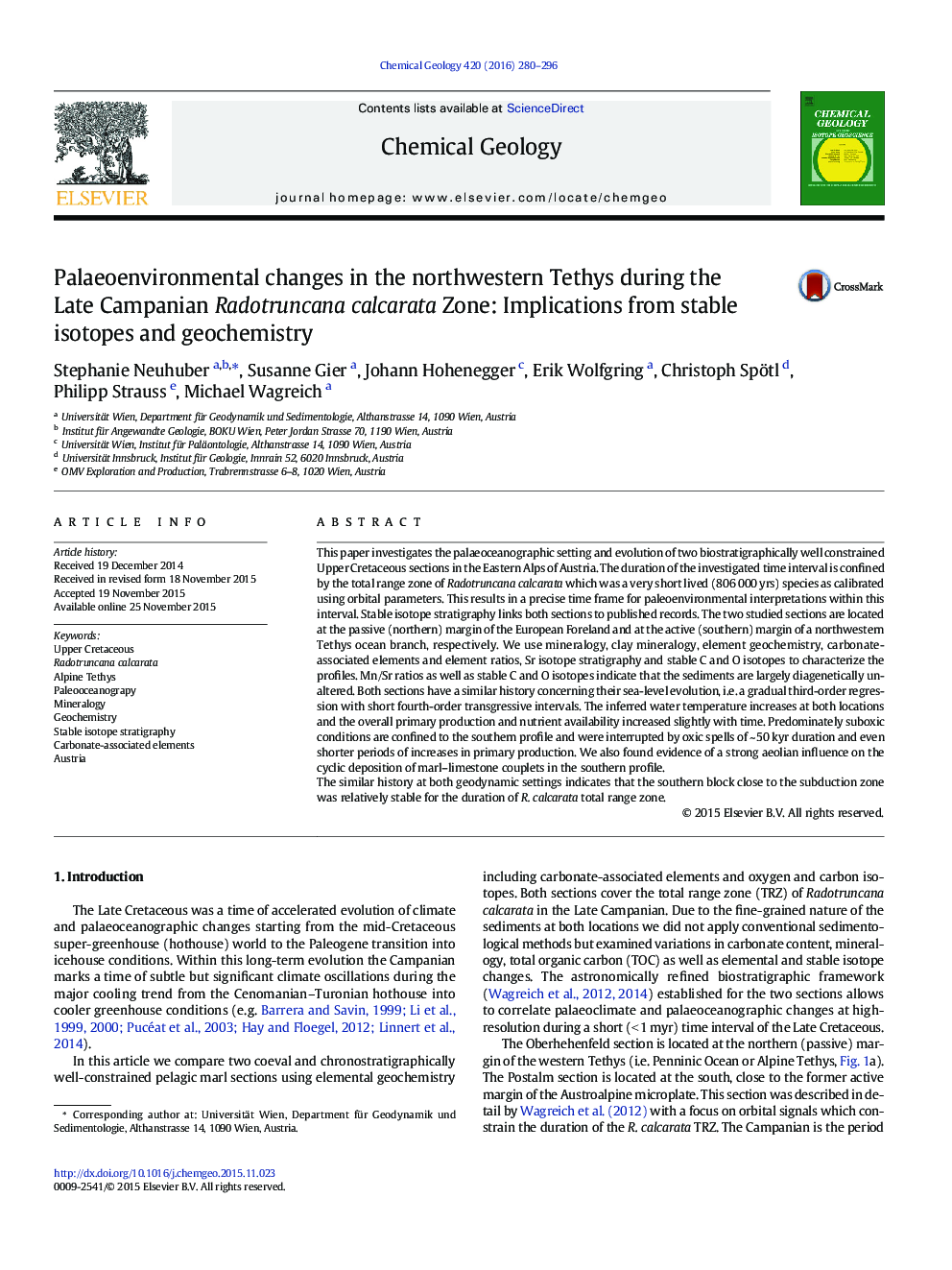| Article ID | Journal | Published Year | Pages | File Type |
|---|---|---|---|---|
| 4698367 | Chemical Geology | 2016 | 17 Pages |
•Two time-equivalent Cretaceous records from Alpine Tethys with low diagenesis•Sediment accumulation is between 0.01 and 0.19 mm/kyr.•Temperature and epipelagic primary production increase in R. calcarata Zone.•At the southern Alpine Tethys a local suboxic environment developed.
This paper investigates the palaeoceanographic setting and evolution of two biostratigraphically well constrained Upper Cretaceous sections in the Eastern Alps of Austria. The duration of the investigated time interval is confined by the total range zone of Radotruncana calcarata which was a very short lived (806 000 yrs) species as calibrated using orbital parameters. This results in a precise time frame for paleoenvironmental interpretations within this interval. Stable isotope stratigraphy links both sections to published records. The two studied sections are located at the passive (northern) margin of the European Foreland and at the active (southern) margin of a northwestern Tethys ocean branch, respectively. We use mineralogy, clay mineralogy, element geochemistry, carbonate-associated elements and element ratios, Sr isotope stratigraphy and stable C and O isotopes to characterize the profiles. Mn/Sr ratios as well as stable C and O isotopes indicate that the sediments are largely diagenetically unaltered. Both sections have a similar history concerning their sea-level evolution, i.e. a gradual third-order regression with short fourth-order transgressive intervals. The inferred water temperature increases at both locations and the overall primary production and nutrient availability increased slightly with time. Predominately suboxic conditions are confined to the southern profile and were interrupted by oxic spells of ~ 50 kyr duration and even shorter periods of increases in primary production. We also found evidence of a strong aeolian influence on the cyclic deposition of marl–limestone couplets in the southern profile.The similar history at both geodynamic settings indicates that the southern block close to the subduction zone was relatively stable for the duration of R. calcarata total range zone.
